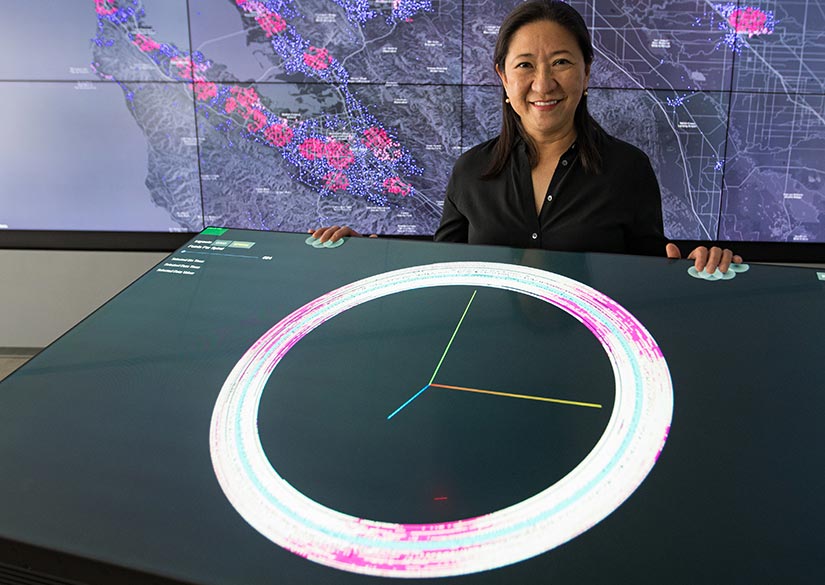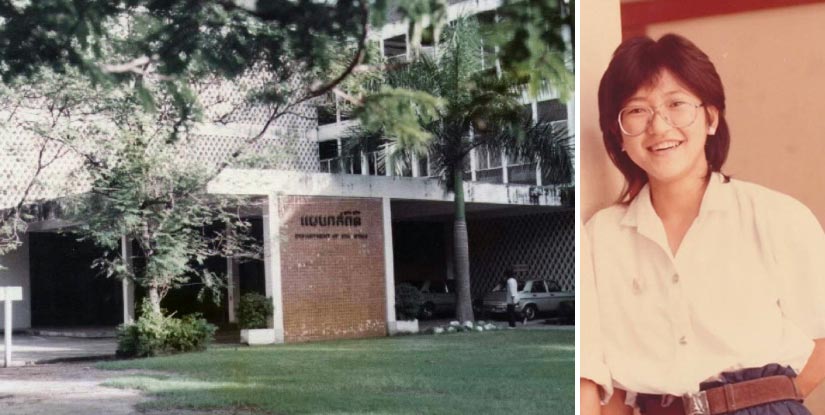Science Needs the Right Attitude
For Nalinrat Guba, Every Discovery Starts With Curiosity

"Science" was a class you probably took in school, but the subject matter you studied was not the only thing you learned. Your science classes helped you develop a mindset, a way of problem-solving, that you can still tap into today in any line of work.
People with various academic and experiential backgrounds collaborate with the researchers at the National Renewable Energy Laboratory (NREL). They have opportunities to work with people like Nalinrat Guba, whose scientist mindset is complemented by those of an artist, athlete, and caretaker. These perspectives make her a versatile and impactful member of NREL's Computational Science Center, where clients come to achieve their goals leveraging computational science, high-performance computing, applied mathematics, and advanced computer science, visualization, and data.
Technique and Improvisation
A famous quote attributed to Pablo Picasso goes: "Learn the rules like a pro, so you can break them like an artist." As a ballet student, Guba knows that rules are the foundation from which creativity blossoms. Many hours of pliés at the bar preceded her ability to do leaps and splits.
The same is true for her growth as a scientist. When she was studying statistics as an undergraduate student in the early 1980s, "We did a lot of number crunching and learning statistical theory," she explained, adding, "Our statistics studies included these new ideas called programming languages, but there was no such thing as software engineering yet." But the mysteries around the computing world unlocked her imagination and led her to a graduate degree in computer information systems and artificial intelligence (AI). "I was obsessed with the field," she exclaimed, noting that her studies ignited an intellectual curiosity that launched her into the world of big data and machine learning.
Guba has experienced the scientific transformations brought on by the digital age, and she sees where the wave of ingenuity is heading. As a research data systems engineer at NREL, she is helping clients solve not just today's problems but tomorrow's problems too. That is where her creativity shines.
Her work in data analysis and computational science combines areas such as cloud computing, database technologies, real-time data streaming, and software quality assurance, among many others. Her crosscutting work can be found in the Chemical Catalysis for Bioenergy Consortium's Catalyst Property Database (CPD) project, an online library of catalyst property data that aims to make it faster and cheaper to identify the right catalyst formula for specific biofuel production processes. The CPD currently includes density functional theory-computed adsorption energies for surface intermediates in catalytic reactions. For this project, NREL researchers and NREL's Data, Analysis, and Visualization (DAV) group worked together to design a database system and a web application that enable researchers to reduce the time required to perform literature searches for data on previously computed catalytic pathways and intermediates. By providing data in a central, searchable location, it also enables accelerated discovery of catalyst descriptor and property correlations that are a common bottleneck in applying predictive approaches to catalyst research and development.
"I think about how to improve data systems by analyzing data to understand why it is designed a certain way and consider alternatives," Guba said. "I really enjoy designing new solutions that are useful for our funders and partners."
Guba knows data management best practices and leaves room for the creative spark—whether it comes from within, from her team members, or her client. Hers is not a cookie-cutter approach to work, but that is what makes it so enjoyable for her.
"I love learning, and I learn something new with every project," she said, "which is probably why I can say that every project feels like a favorite project in some way."
Pooling Your Perspectives
When Guba swims laps in the pool, she switches between strokes to work different muscles and change her view. She does not spend too much time looking in the same direction. If your data project is the pool, Guba's job is to help you figure out what combination of strokes will get you to your goal.
"I love the challenge of figuring out that puzzle," she said. "You know where you want to get to, so it's a matter of figuring out how and in what way that is efficient and makes sense for you."
In NREL's Computational Science Center, you will find Guba thinking of different ways to manage data as part of the data team in the DAV group.
If anyone needs help with data management, analysis, and visualization, they call in her team of experts to strategize and execute data collection, storage, and management. Complementary teams focused on data analysis and visualizations can help you interpret data and bring it into an immersive three-dimensional space to find hidden insights.
"I've worked on several projects that all dealt with data management differently," Guba said. "Our team's approaches to data management solutions range from using relational database management systems for scientific data to using data repositories as document hubs for energy materials networks. I helped expand a data streaming platform to support larger data sets and real-time data collection for lab equipment and devices; enabling data scalability and redundancy is a common challenge we help solve by building different infrastructures based on unique needs."
The DAV team also utilized the data streaming platform to collect and distribute metrics and jobs data from NREL's high-performance computer, Eagle, in real time. These data sets are used in several energy analysis projects. The Artificial Intelligence for Data Center Operations (AIOps) project uses high-performance-computer data collected via NREL's data streaming platform for data analytics and machine learning to create new solutions to maximize data center efficiency and resiliency. This project is a partnership between Hewlett Packard Enterprise (HPE) and NREL's Computational Science Center.
"Our success can be attributed to the diverse expertise of team members, who are data scientists, data engineers, visualization experts, and systems engineers," Guba remarked.
External data access requirements presented a unique challenge for the data team in how to securely publish NREL data streams to HPE scientists for their models. The team explored several options and was able to determine the most efficient way to synchronize NREL data from its streaming platform to HPE internal processes.
Guba loves the inquiry process behind her work as a data scientist. It is something she first noticed as a cultural phenomenon when she immigrated to the United States for her master's program.
"In Thailand, where I grew up, you were considered a good student if you accepted everything you were taught, but [in the United States] it is almost the opposite," Guba noted. "You are a good student if you start thinking and questioning, to voice your opinion, to disagree. I really value that mentality, even now as a professional."
Challenging each other to find the best solutions is an ideal that drew Guba to NREL and has bonded her to her team.
"I always wanted to work at NREL," she said. "I'm working with all these smart people, all day long. I'm so thankful I work with people from whom I can learn—my co-workers, team members, and managers at every level."

Facing the Bias Blind Spot in AI
As a mom, Guba was never afraid of admitting to her kids that she did not know everything. But that did not keep her from trying to find answers. In the fast-paced world of AI advancements, Guba knows there is a degree of uncertainty and inaccuracy that needs to be addressed.
"We want to move quickly to keep up with the technology," Guba said, "but we also realize that there are several aspects of the AI technology that we don't yet understand and that still need to be explored in order for us to utilize it to its full potential."
A part of that work is creating data systems that mitigate influential factors like unconscious bias.
"As a human being, you have unconscious bias, whether it be the influence of your culture or upbringing," Guba said. "It is difficult to really stop and recognize that. But if you don't think about it, that is unconscious bias. The same thing exists when I work with a system. It's easy to overlook the fact that your results might be biased."
This industry-wide challenge is one Guba is actively pursuing as part of NREL's larger mission.
"It's exciting to be at the forefront of this important work, to create a clean energy future for everyone," she said. "If I can be a part of the solution in some way, make even a small difference—it doesn't have to be big or public—that is deeply gratifying."
Guba is one of many NRELians working on interdisciplinary teams across the energy sector. Learn more about the collaboration opportunities inside NREL's Computational Science Center.
This article has been updated to reflect an editorial change made after its original publication.
Last Updated May 28, 2025
